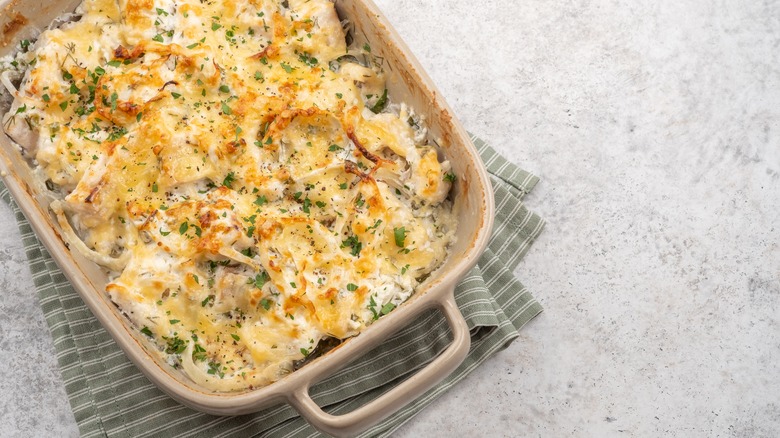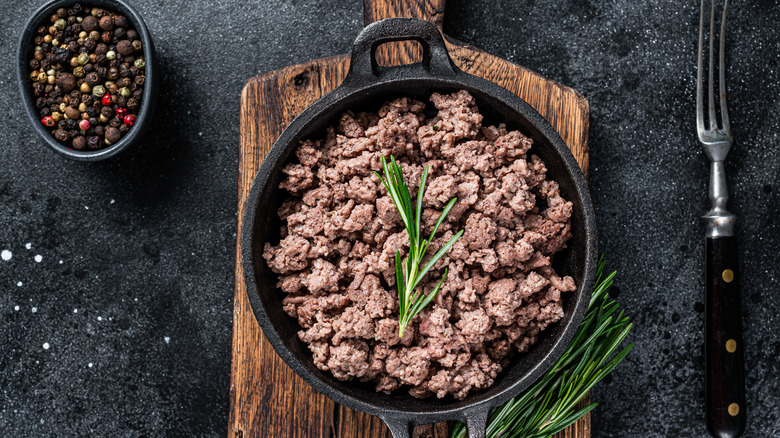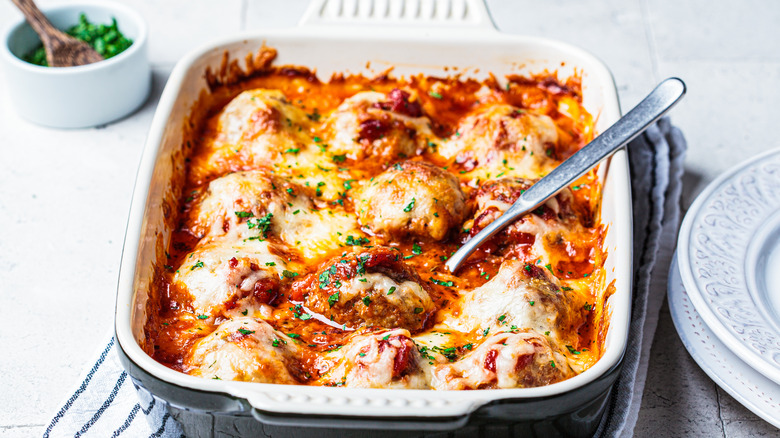Should You Always Drain Meat Before Adding It To A Casserole?
Some people might think of casseroles as kind of outdated, but when done with care, a casserole can be a really fun and tasty way to clean out your pantry or to just pack a dish full of healthy and nutritious ingredients. Casseroles are excellent for people who are busy but want to eat food made at home. You can prep them ahead of time, freeze or refrigerate them, and pop them in the oven right before mealtime. They also save well for three to four days, per the Academy of Nutrition and Dietetics. If you're the kind of person who's on the meal prep trend, a casserole is a great way to go.
Casseroles are versatile and can take on whatever flavor profile you're working with. You can make them with vegetables, rice, noodles, cheese, and meat. You can make a casserole out of all fresh ingredients like this yellow squash casserole, or dive into your pantry staples and use a can of soup like this chicken casserole. Whether you're making a casserole from a classic recipe or winging it and just tossing some of your favorite ingredients together, there are a few crucial steps you must keep in mind.
Casserole recipes depend on the ingredients
When it comes to adding cooked meat to a casserole there are certain meats you want to drain and others that you don't. Southern Living recommends draining beef before adding it to your casserole recipe and TODAY notes that doing so will keep your casserole from being greasy or too watery.
Southern Living also recommends that if you're not immediately ready to mix your browned ground beef into your casserole you refrigerate it until you need it to prevent a risk of bacteria. When it comes to adding high-fat meats to a casserole like ground pork, sliced ham, sausage, or beef, TODAY explains you should always cook and drain these meats before adding them to the mix. The only exception is lean types of poultry like ground white meat turkey or ground chicken breast. Since these meats are notoriously low in fat you'll want to keep their fat content in the dish, so your casserole doesn't turn out too dry.
Bonus casserole tips
A few other tips if you're planning to make a casserole for your next meal. If you're adding pasta to your casserole, TODAY advises that you undercook it slightly so that it won't get soggy in the oven.
You want to do the same thing with vegetables. Blanching vegetables before putting them in a casserole ensures that they'll be tender and not soggy. MarthaStewart.com suggests steering clear of frozen veggies as they can release too much water and make your casserole soggy.
Don't forget to flavor your casserole with herbs and spices. It's easy to get caught up in all the preparation and layering that's required to make a good casserole, but MarthaStewart.com notes that they are notorious for being bland. Your spice pantry can be a lifesaver that adds flavor. Employ these handy hacks next time you jump in the casserole game, and you'll knock it out of the park.


